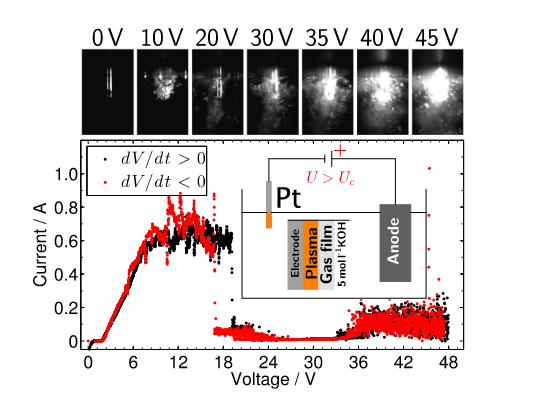

Nonlinear time-series analysis of current signal in cathodic contact glow discharge electrolysis
In the standard two-electrode configuration employed in electrolytic process, when the control dc voltage is brought to a critical value, the system undergoes a transition from conventional electrolysis to contact glow discharge electrolysis (CGDE), which has also been referred to as liquid-submerged micro-plasma, glow discharge plasma electrolysis, electrode effect, electrolytic plasma, etc. The light-emitting process is associated with the development of an irregular and erratic current time-series which has been arbitrarily labelled as "random," and thus dissuaded further research in this direction. Here, we examine the current time-series signals measured in cathodic CGDE configuration in a concentrated KOH solution at different dc bias voltages greater than the critical voltage. We show that the signals are, in fact, not random according to the NIST SP. 800-22 test suite definition. We also demonstrate that post-processing low-pass filtered sequences requires less time than the native as-measured sequences, suggesting a superposition of low frequency chaotic fluctuations and high frequency behaviors (which may be produced by more than one possible source of entropy). Using an array of nonlinear time-series analyses for dynamical systems, i.e., the computation of largest Lyapunov exponents and correlation dimensions, and re-construction of phase portraits, we found that low-pass filtered datasets undergo a transition from quasi-periodic to chaotic to quasi-hyper-chaotic behavior, and back again to chaos when the voltage controlling-parameter is increased. The high frequency part of the signals is discussed in terms of highly nonlinear turbulent motion developed around the working electrode. © 2016 Author(s).



